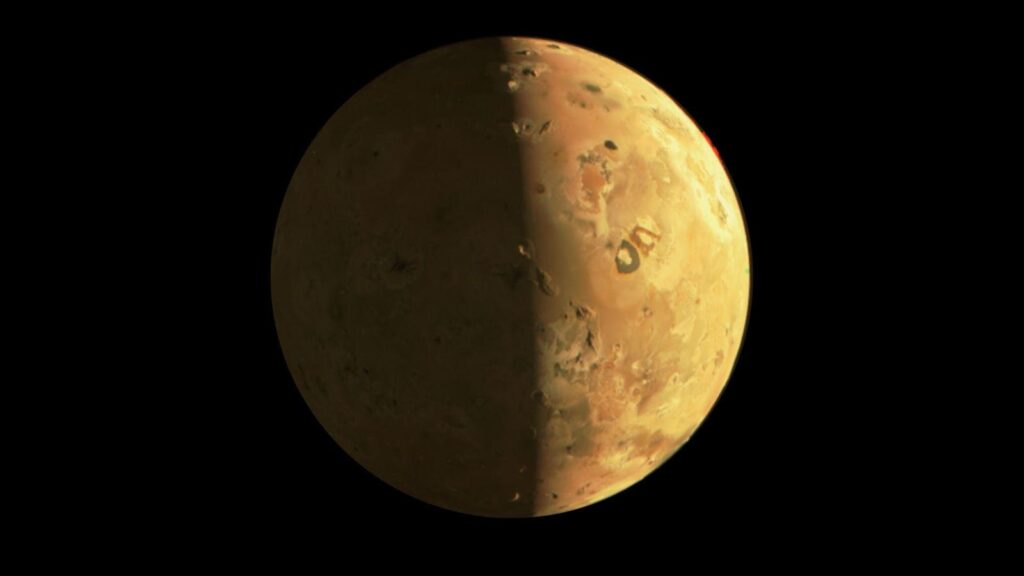Jupiter’s moon Io as seen by NASA’s Juno spacecraft on Feb. 2, 2024.
Io, the innermost giant moon of Jupiter, may not have a shallow sea of magma beneath its surface, as was previously thought.
The most volcanic place in the entire solar system, Io, is covered by hundreds of volcanoes, some producing eruptions so powerful Earth-based telescopes can image them.
Juno At Jupiter
A paper published today in Nature takes data from NASA’s Juno spacecraft, which has been orbiting Jupiter — and flying close to its moons — since 2016.
In December 2023 and February 2024, Io was imaged by Juno from as close as just 930 miles away. That’s closer than any spacecraft has got to Io for 20 years since NASA’s Galileo spacecraft orbited Jupiter. The images were taken by JunoCAM, the spacecraft’s two-megapixel camera.
Global Magma Ocean?
It was hoped these new images and experiments conducted during the flyby would shed light on whether the magma is distributed in patches or globally.
That’s exactly what has happened, with calculations of Io’s tidal heating by Jupiter showing that volcanic activity on Io is unlikely to be sourced from a magma ocean.
Tidal Heating
Io is considered the best place in the solar system to understand tidal heating. It’s in a constant gravitational tug-of-war with Jupiter and the giant planet’s three other big moons. Its elliptical orbit also means that Jupiter’s gravitational pull varies.
Its constant stretching and squishing as it orbits every 42 days causes deformation and frictional tidal heating so great that magma is created under the surface.
Solid Mantle
However, the amount of tidal energy is not sufficient to cause the melting of Io’s interior, ruling out a subsurface magma ocean, stated the authors. “Tidal heating alone appears insufficient to allow such a magma ocean to develop at Io,” reads the paper. According to the authors, this suggests that Io has a mostly solid mantle — the layer between the crust and core.
The findings have implications for planetary scientists’ understanding of other moons, such as Europa at Jupiter, Enceladus at Saturn, and the five largest moons of Uranus. “Although it is commonly assumed among the exoplanet community that intense tidal heating may lead to magma oceans, the example of Io shows that this need not be the case.
Wishing you clear skies and wide eyes.

